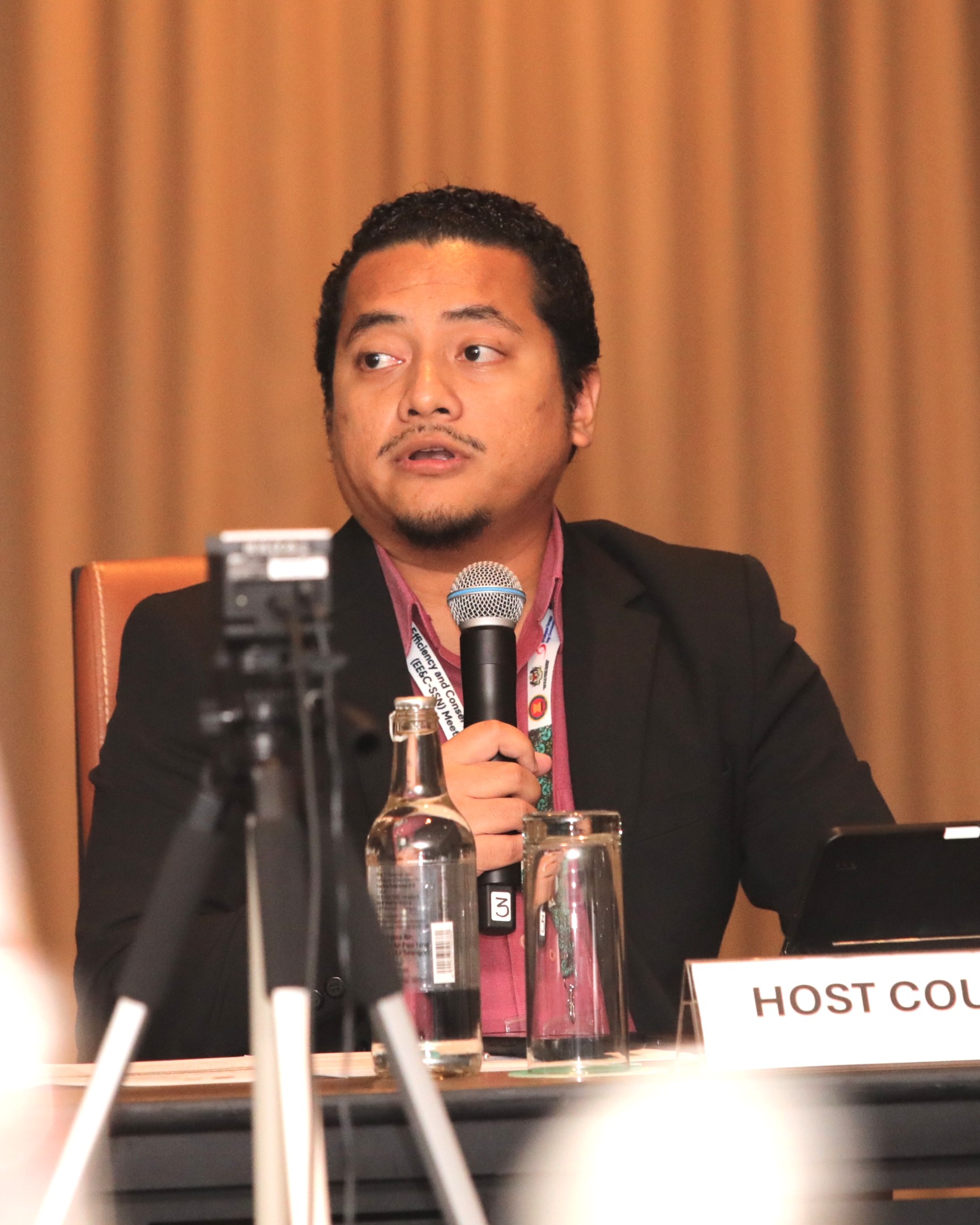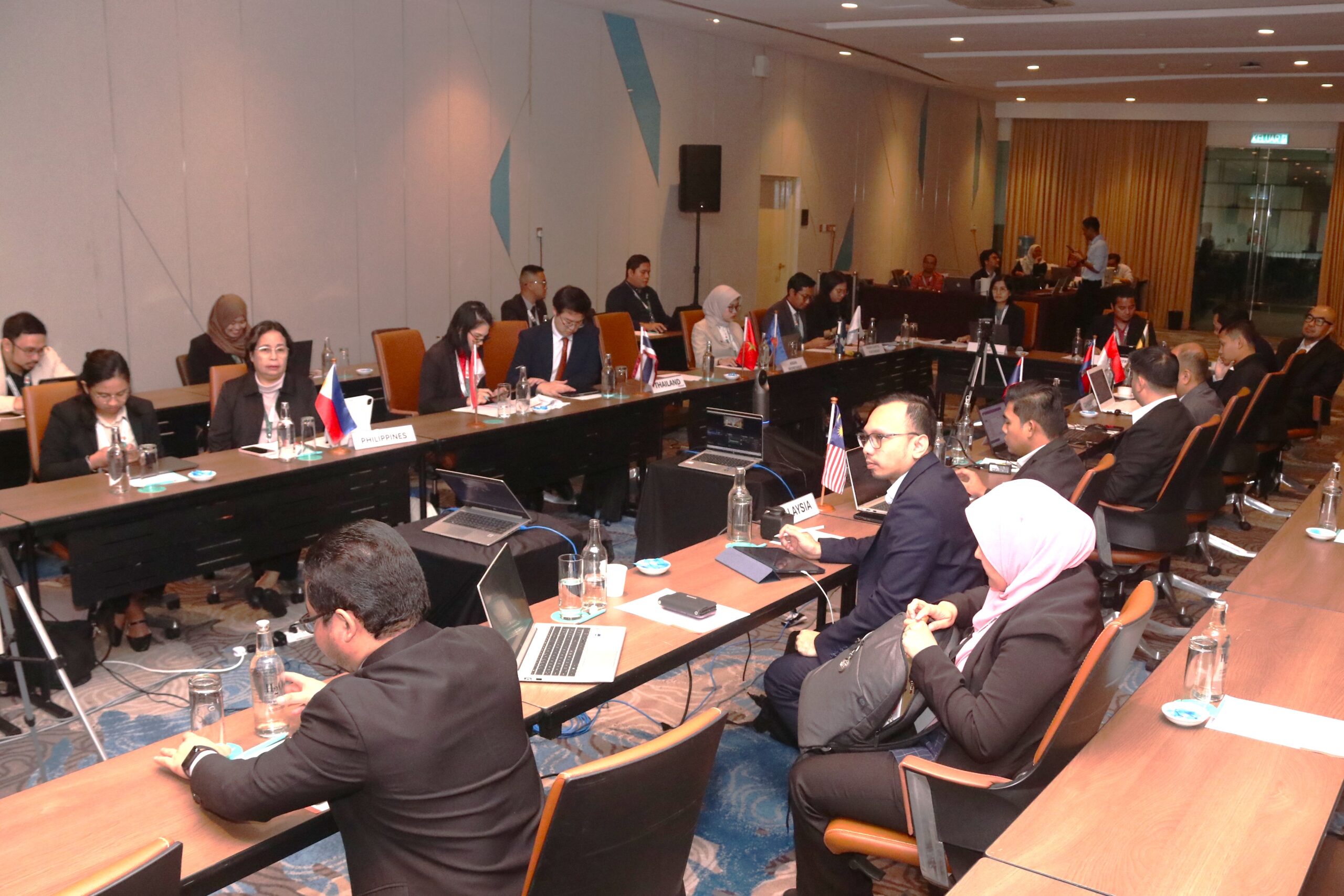Menu

Photo 1. APAEC Post-2025 Drafting Workshop Participants
The ASEAN Centre for Energy (ACE), hosted by the Energy Commission of Malaysia, organised the APAEC Post-2025 Drafting Workshop, as part of the 29th Energy Efficiency and Conservation Sub-Sector Network (EE&C-SSN) and its Associated Meetings. This Workshop was held on Tuesday, 20 May 2025, at the Le Meridien Putrajaya, Malaysia.
Attended by ten (10) ASEAN member states (AMS), along with representatives from ASEAN Secretariat and ACE, the meeting aimed to discuss the proposed New Energy Intensity (EI) reduction target, finalise key strategies, Outcome-based strategies (OBS), and Action Plans (APs) for the APAEC Post-2025, focusing on Programme Area No. 4: Energy Efficiency and Conservation (EE&C).
Rungrawee Yingyuad, Renewable Expert, Department of Alternative Energy Development and Efficiency (DEDE) of Thailand, as the EE&C-SSN Coordinator and meeting chair, along with Norazrin Bin Rupadi, Deputy Director of Energy Efficiency and Conservation, Energy Commission of Malaysia, as co-chair, commenced the meeting by delivering opening remarks.
 |
 |
 |
Photo 2. Opening Remarks from Rungrawee Yingyuad, DEDE, Thailand (left), Norazrin Bin Rupadi, Energy Commission, Malaysia (centre), Dr. Zulfikar Yurnaidi, ACE (right).
Dr. Zulfikar Yurnaidi, Manager of Energy Modelling & Policy Planning (MPP) and Acting Manager of Energy Efficiency & Conservation (CEE) Department of ACE, followed their remarks by stressing the need for robust and thorough planning for the APAEC post-2025 to be endorsed in 2025. This ensures a strategic, inclusive APAEC, aligning with the five-year theme of “Advancing Regional Cooperation in Ensuring Energy Security and Accelerating Decarbonisation for a Just and Inclusive Energy Transition”.
The first half of the agenda discussed the proposed key strategies, OBS, and APs for Programme Area No. 4 on EE&C within APAEC Post-2025. Dynta Trishana Munardy, Senior Officer of APAEC and Strategic Partnership Department at ACE, presented key lessons learned from APAEC Phase II: 2021 – 2025 and outlined several key Items for enhancement in APAEC 2026–2030. These enhancements include identifying more strategic and impactful activities, achieving stronger alignment between regional and national energy policies and aspirations, improving monitoring, evaluation, and reporting mechanisms, enhancing coordination on cross-sectoral issues, and increasing engagement of diverse stakeholders.

Photo 3. Participants of APAEC Post-2025 Drafting Workshop.
The session then proceeded to a consultation and discussion with EE&C-SSN Focal Points, led by the Chair, to gather their suggestions and finalise the new EI reduction target, for Programme Area No. 4 on EE&C. AMS agreed with the proposed EI reduction target using key indicators from both the supply side and final total energy consumption. Specifically, Total Primary Energy Supply (TPES) is considered as the key indicator of the APAEC target, reflecting the energy supply aspect. Meanwhile, Total Final Energy Consumption (TFEC) serves as the key EE&C programme area, focusing on energy use at the end-user level. Other suggestions included the need for more refined key strategies to ensure OBS reflects regional goals a clear timeline for APs and consideration of methodology. This will be considered with a clear and agile framework for monitoring and evaluation systems in place.

Photo 4. Participants of APAEC Post-2025 Drafting Workshop.
Ending the meeting, Dynta Trishana Munardy wrapped up the discussions, concluding all the meeting points and way forward for the APAEC Post-2025. The meeting had a productive discussion and future recommendations, offering comprehensive review from the implementation of APAEC Phase II: 2021 – 2025 and suggestions for the next steps of development of APAEC Post-2025. The discussion emphasised a shared goal towards sustainable, resilient, and integrated energy futures aligned with ASEAN Economic Community (AEC) strategic plans.
